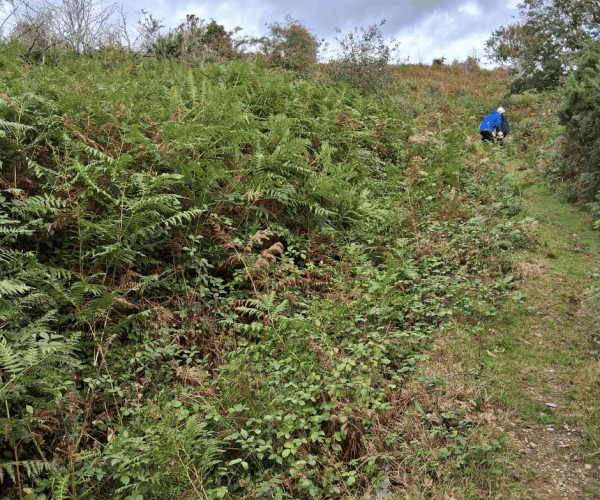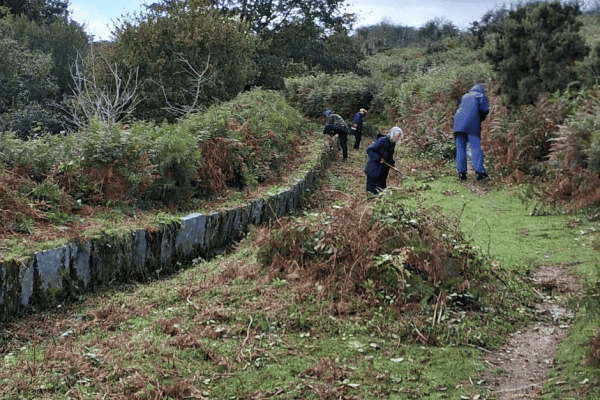Nine Dartmoor Preservation Association volunteers have tackled the overgrown gorse, bracken and bramble that covers Drake’s Leat (or Plymouth Leat) on Roborough Down.
On Friday, September 12 the volunteers used strimmers and hand tools to cut back fast growing gorse and bracken.
Continuing from where they had left off in the summer, they cleared about 250 metres of the leat, which once supplied water from the River Meavy to the people and factories of Plymouth.

Derek Collins, volunteer coordinator, said: ”Never has so much been achieved by so few for the benefit of so many. The stalwart nine, despite the occasional shower, got stuck in and finally finished clearing the cutting of gorse, bracken and brambles that for one reason or another had remained untreated for some time. They can now go home and put their feet up with the satisfaction of knowing what a fine job they did so many, many thanks to you all.”
Built at the end of the 16th century, Drake’s Leat is a mostly stone-lined watercourse which was dug by hand to transport water 17 miles from Dartmoor to the growing port and city of Plymouth. The channel is 4ft to 5ft across and 3ft deep.
Much of the masoned channel still exists and is in good repair, in part thanks to the ongoing efforts of dedicated DPA volunteers, but it is no longer used and remains dry throughout most of the year.
The upper part of the leat crosses the open moor, taking a long, but continuously slightly downhill route towards Plymouth. Due to being easy to spot and follow, it has become a popular waymarker for walkers, who can follow various sections of the feature.
The Plymouth and Tavistock railway also followed roughly the same route as the leat, where it comes off the moor, until it shut in the 1960s. Today, the disused railway track has been reopened as the popular Drake’s Trail, which has been resurfaced for cyclists and walkers.





Comments
This article has no comments yet. Be the first to leave a comment.